Illustrated history
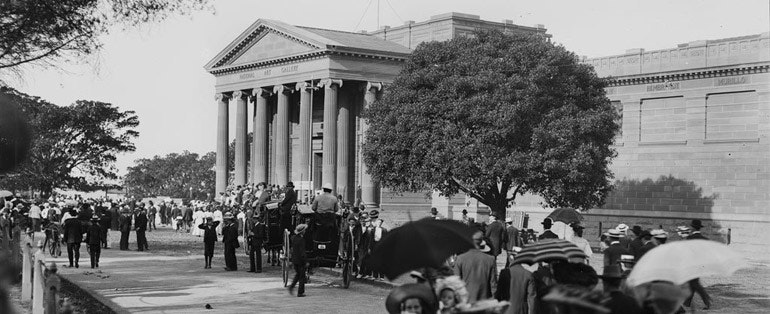
The Sydney Gallery has one of the finest natural positions in the world, and the Sydney folk have made the most of it. Their gallery resembles a kind of golden temple surrounded by grassy lawns and Moreton Bay trees, through which are seen spaces of lovely blue harbour water. Fine pictures, fine light, and fine arrangement.
1871
The Art Gallery is founded as the New South Wales Academy of Art in 1871. Its earliest activities include exhibitions and public programs. Works of art are purchased from 1874, and, in the following year, temporary premises are leased on Elizabeth Street. The collection is open to the public on Friday and Saturday afternoons.
The nucleus of our present gallery was a yearly exhibition of the work of a small band of struggling local artists. It was a faint beginning, but it was instinct with life.
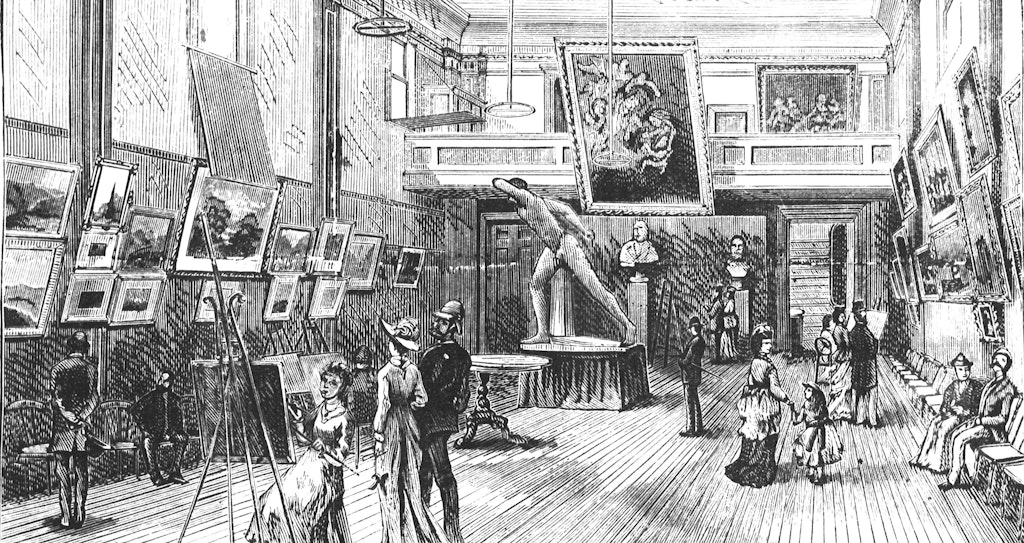
1879
The Art Gallery’s first dedicated building is constructed in 1879 as part of the Sydney International Exhibition. Situated in the Botanic Garden, ‘The Fine Arts Annexe’, as it is known, consists of three long galleries designed by architect William Wardell.
Unquestionably one of the most attractive features of the International Exhibition is the Art Gallery. Everybody goes there, and everybody enjoys the visit. In the first place, it is a novelty; in the next, it is good.
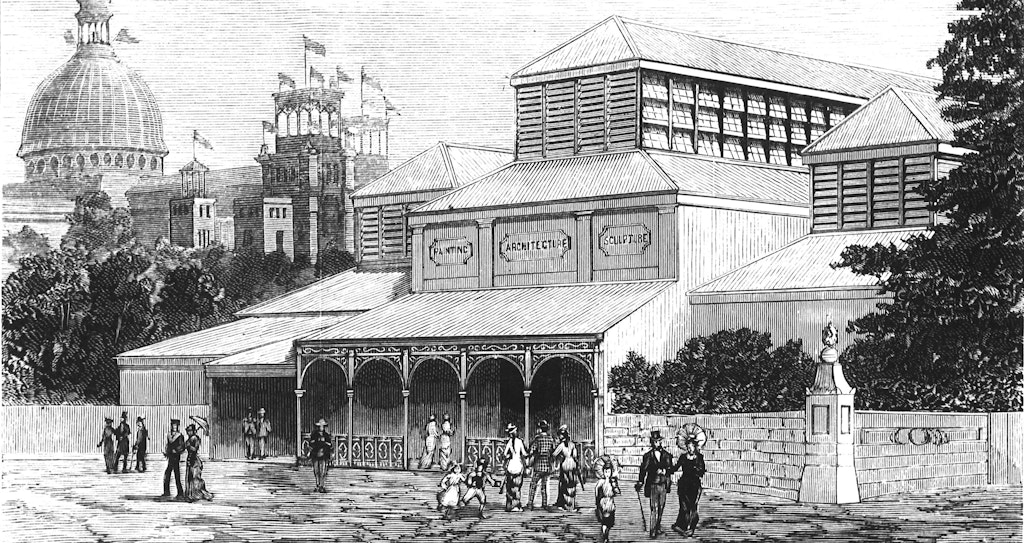
1880
The Fine Arts Annexe is rededicated as the Art Gallery of New South Wales in 1880, at a ceremony presided over by the Governor. In these founding years, the focus of the collection is contemporary Australian, Asian and international art. When fire destroys the adjacent Garden Palace in 1882, the trustees call for a fireproof gallery more centrally located.
Concerning the fire at the adjacent Garden Palace,I would point out that the present gallery building is a very temporary construction. Another structure is required.
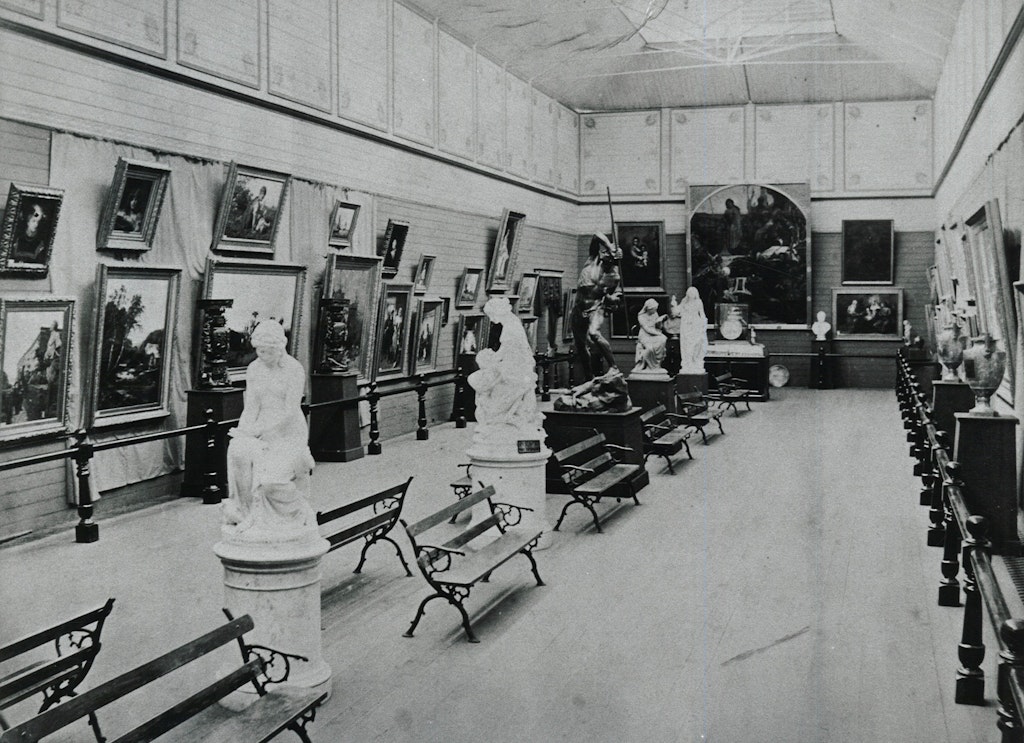
1881 photograph of the interior of the Art Gallery of New South Wales showing (at the end of the gallery) Ford Maddox Brown's painting Chaucer at the court of Edward III.
1885
The Art Gallery’s current site in the Domain is confirmed after extensive debate, and a simple structure is opened to the public in 1885. Designed by the Gallery’s first architect, John Horbury Hunt, it resembles a factory and is dubbed the ‘art barn’.
The question of site is of incalculable importance. The Gallery should be placed in the way of the people. Why not wed the gardens and the gallery?
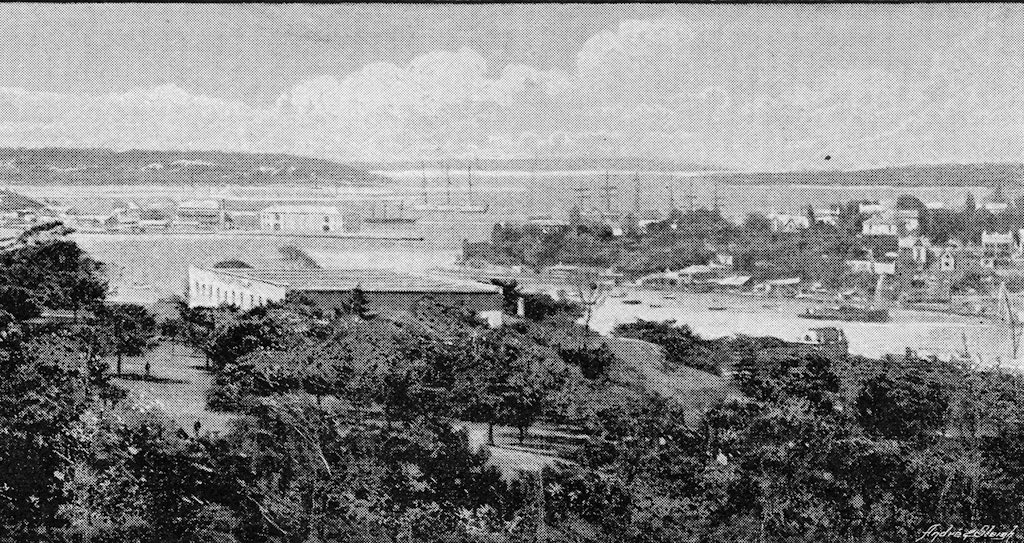
1890
The ‘art barn’ becomes a popular Sydney destination and while the public is eager to see the building finished, it takes more than ten years before agreement is reached on its design. Hunt has all his schemes rejected as too grand or out of keeping with the parkland setting of the Domain. He is controversially replaced by government architect Walter Liberty Vernon.
A city so important as Sydney must have something more than a makeshift structure in which to display its art treasures.
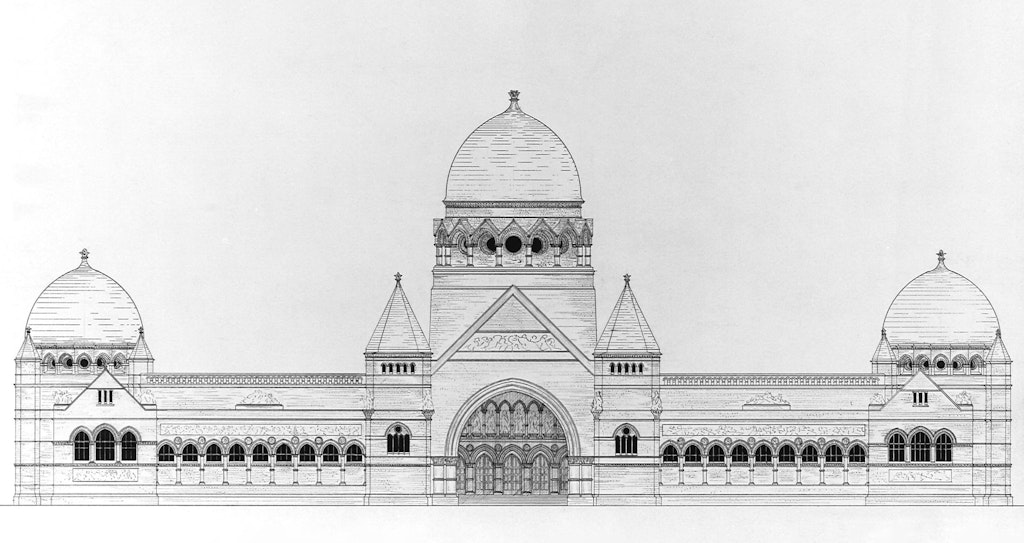
1896
Construction of the Art Gallery, to Vernon’s design, commences in 1896. Despite funding pressure, the government remains committed to the project as an important symbol of civic pride. In 1902, the Minister of Public Instruction is dramatically hoisted in the air to set the apex stone in the pediment above the portico.
The simple beauty of the chastely Classical exterior, one of the most successful bits of architecture in the city, bears testimony to the ability of the Government Architect.
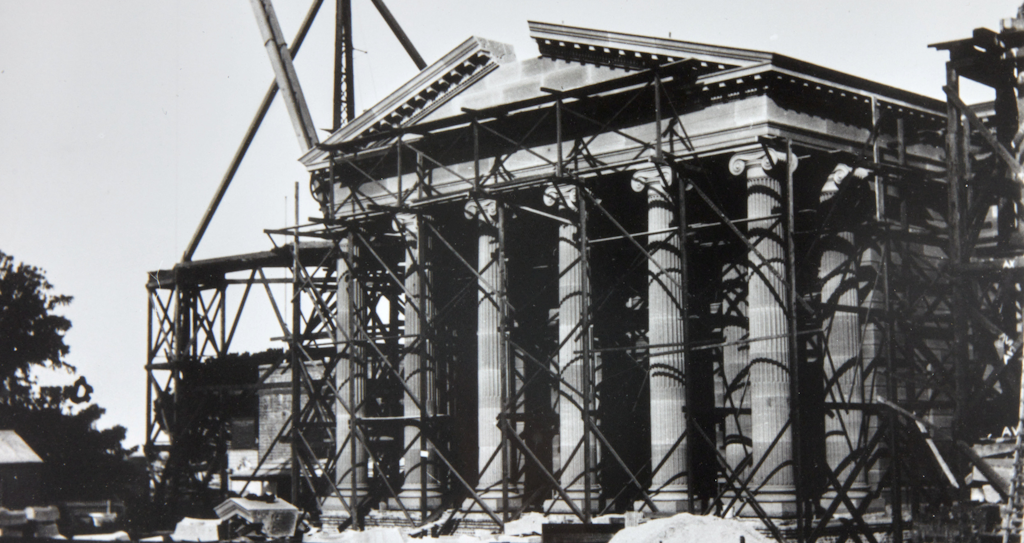
1900
The architect’s designs for the Art Gallery include a wing facing the harbour and a grand entrance court. These are never built. Financial constraints lead to work stopping after 1909, with only a quarter of the building and the facade completed. No major construction is undertaken for another 60 years.
Only one wing of the building, about one fourth of the whole structure, is at present completed, and gives rich promise of future beauty.’
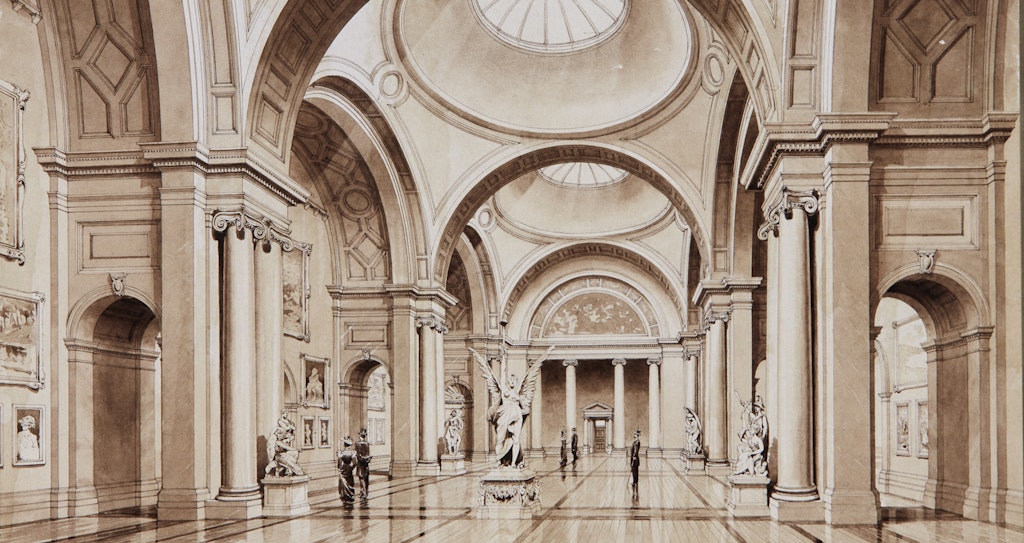
1924
Plans for the Art Gallery’s exterior include relief panels in the facade and free-standing statuary. English sculptor Gilbert Bayes is commissioned to design a pair of equestrian bronzes. Painted mock-ups are placed on pedestals at the beginning of 1924. But when the first statue arrives, it is repositioned so as not to compromise the simplicity of the portico.
Art objects should not be buried in the Gallery. Let them be placed in positions where they will become part of the daily life of the people.
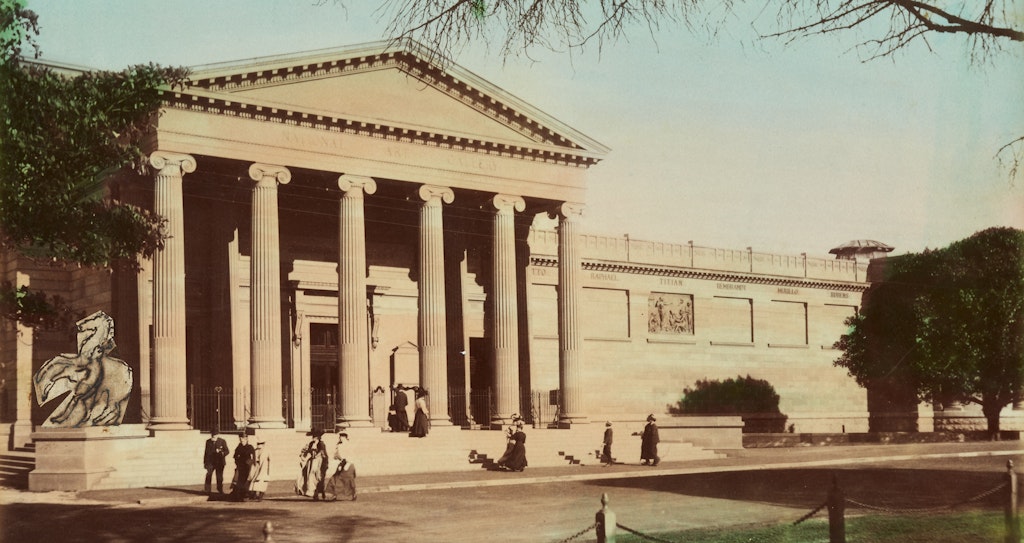
1933
Concern for the care of collections in Sydney’s sub-tropical climate leads to a conservation studio being built at the rear of the Art Gallery. The first dedicated laboratory of its kind in Australia, its state- of-the-art facilities enable the Gallery to become a national leader in art conservation.
In these days painters take little interest in their materials. They use whatever means comes easiest to hand to get an effect and trust to luck that all will be well.
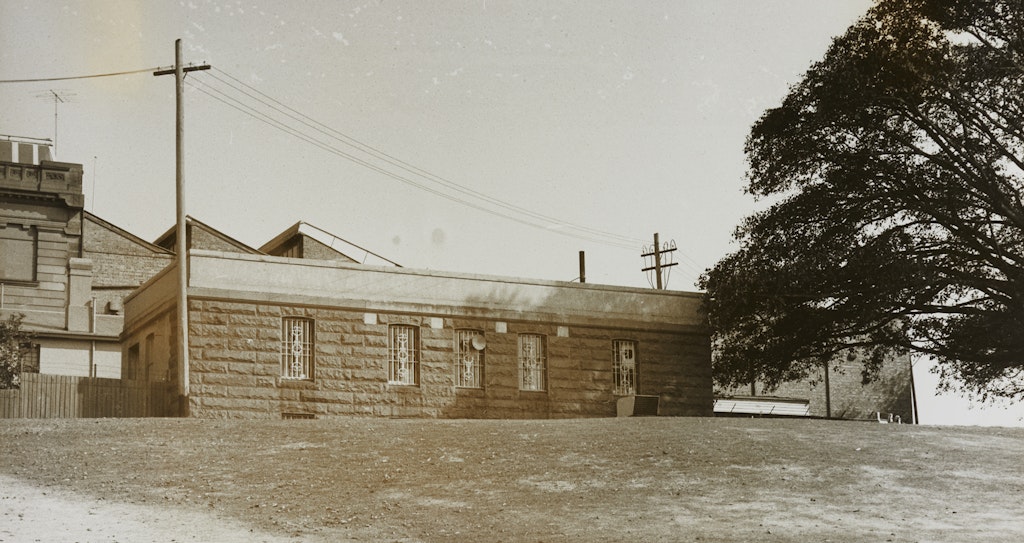
1942
War-time concern over the navy’s limited fuel-storage capacity for the fleet base at Garden Island results in oil tanks being built into the landscape on the eastern side of the Domain in Woolloomooloo. Constructed under secrecy at the time, the underground tanks are decommissioned in the 1980s.
The tanks are being built so as to cause the least damage as possible to the Domain grounds.
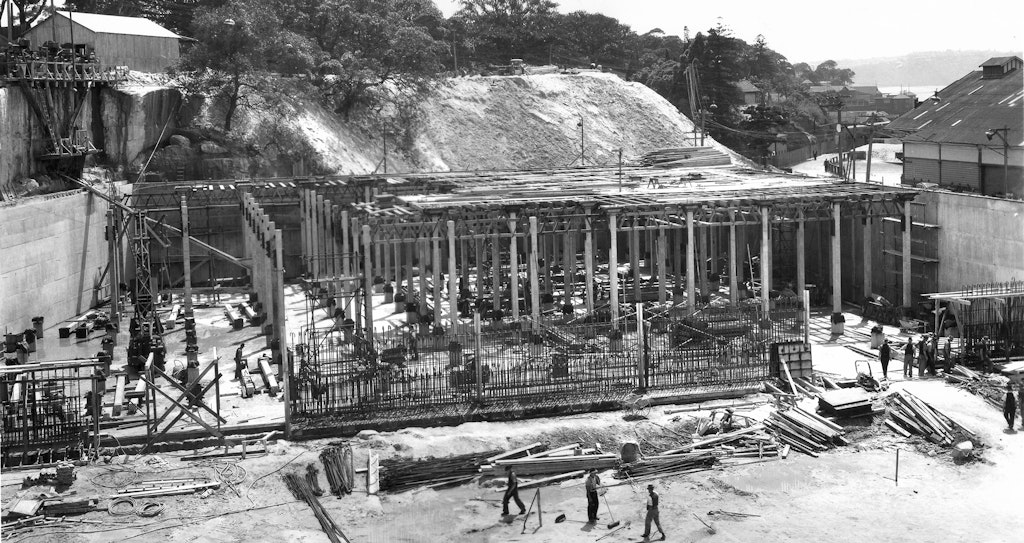
1958
The 1958 Art Gallery of New South Wales Act modifies how the Art Gallery is governed and changes its official name after nearly 60 years, dropping ‘National’ and giving the institution a greater state-wide focus. An ambitious regional travelling art scheme brings key works from the collection to every major town in NSW.
One of our post-war aims will be to develop an interest in art by the average citizen. It is vital that growing children in country towns have the advantages of an art gallery.
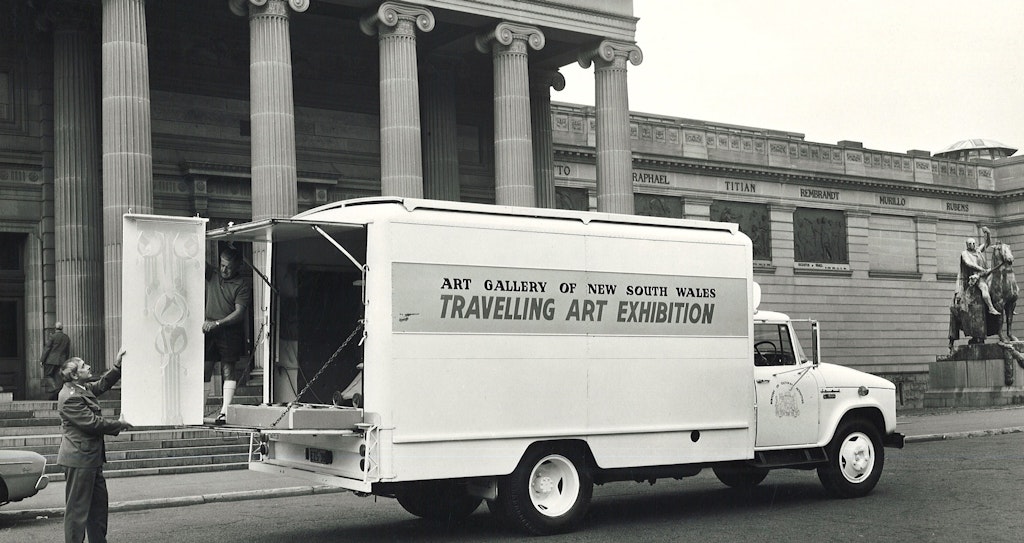
1962
Construction on the Cahill Expressway, the first freeway to be built in Australia, begins in 1955, despite widespread criticism of the way it damages the spatial relationships between the Botanic Garden, Domain and Gallery. An elevated section of the expressway opens in 1958 and a sunken section in 1962.
Mr Cahill says the expressway is beautiful. His attitude: “You better get along and admire it for it is what you are going to get”
![Stanley Gordon Moriarty, City [from the Astor] circa 1961](https://www.datocms-assets.com/42890/1618225104-arc358-62-5-m.jpg?fit=clip&iptc=allow&w=1024)
1972
Work on a new wing of the Art Gallery, supported by government and philanthropic funding, commences in 1968. The Sulman Award-winning extension, designed by architect Andrew Andersons, transforms the way the Gallery operates and displays its collection.
I was there, a client curator at the Art Gallery of New South Wales. We greatly admired the architect’s exhaustive consultation to establish our detailed needs. The Gallery re-opened in 1972 and is still the most user-friendly art museum in Australia.
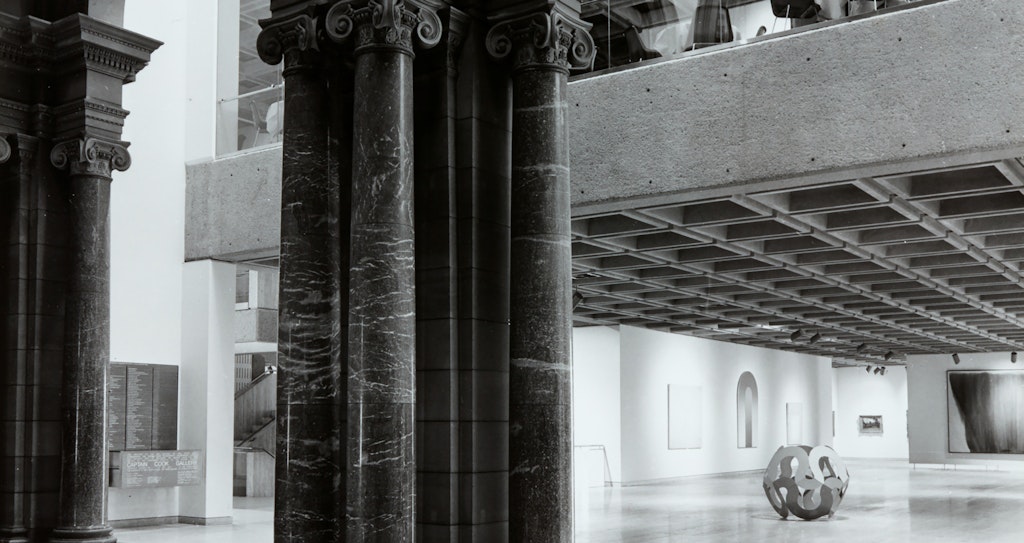
1973
A gallery of Aboriginal and Melanesian art opens in 1973, the first such space within an Australian art museum. Installed at the entrance are tutini, or Pukumani grave posts, by Bob Apuatimi, Laurie Nelson Mungatopi, Jack Yarunga, Don Burakmadjua and Charlie Kwangdini, originally commissioned in 1958. Heralding a shift in tradition, the artists made the decision to produce these tutini for a wider audience.
What a fantastic job those Elders did ... I think those old people wanted the outside world to be cultured.
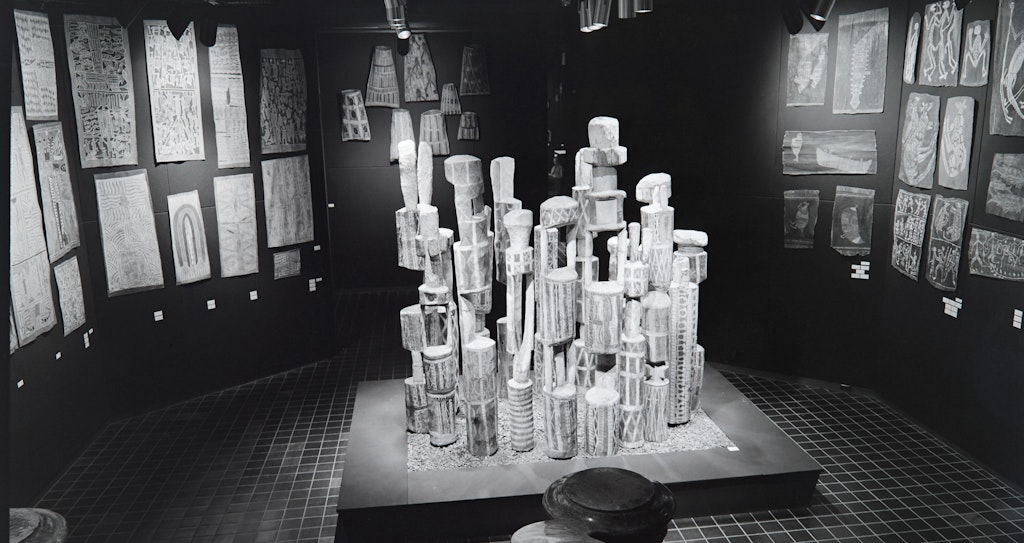
Laurie Nelson Mungatopi, Bob Apuatimi, Jack Yarunga, Don Burakmadjua, Charlie Kwangdini, unknown Tiwi artist Pukumani grave posts 1958 © the artists’ estates, courtesy Jilamara Arts. Licensed by Copyright Agency, 2019
1988
A new extension to the Art Gallery by architect Andrew Andersons provides more display space for the permanent collections and temporary exhibitions, a 300-seat theatre and a new expanded gallery for Asian art. The architect is praised for the way the conjunctions between the 1972 and 1988 developments are made so discreet that visitors are unaware of them.
Consensus is rare in architecture, but consensus we appear to have. Staff, architects and public agree: it’s a damned good gallery.
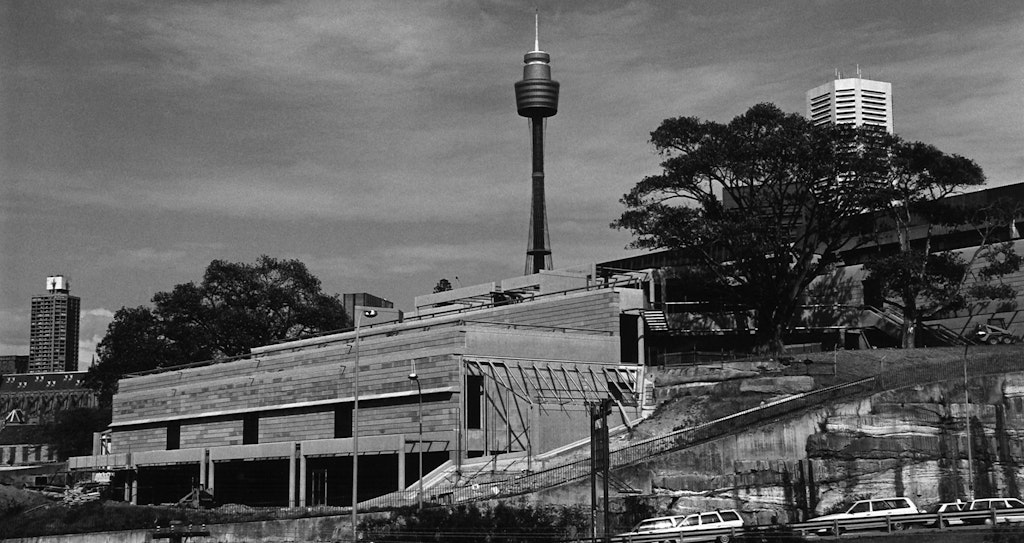
1994
A dedicated gallery for Aboriginal and Torres Strait Islander art is opened within the new extension. It is called Yiribana, meaning ‘this way’ in the Eora language. Yiribana builds on the Art Gallery’s pioneering work in collecting and displaying Australian Aboriginal art, which saw it appoint the first curator of Aboriginal and Torres Strait Islander art, Djon Mundine, ten years earlier.
The Yiribana Gallery will be a place where art is viewed as part of a living culture.
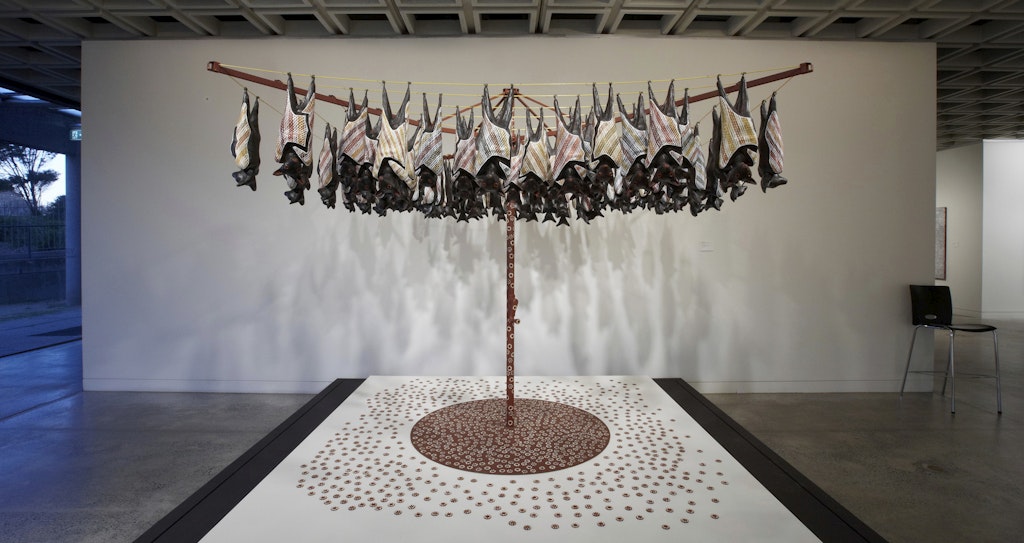
Lin Onus Fruit bats 1991 © Lin Onus Estate. Licensed by Copyright Agency, 2019
1999
The NSW Government opens a land bridge over the Cahill Expressway. After some controversy and substantial modifications, the final design includes a parkland canopy over the freeway. This partially reunites the Botanic Garden, Domain and Gallery.
The success of the canopy over the Cahill Expressway should inspire similar ventures.
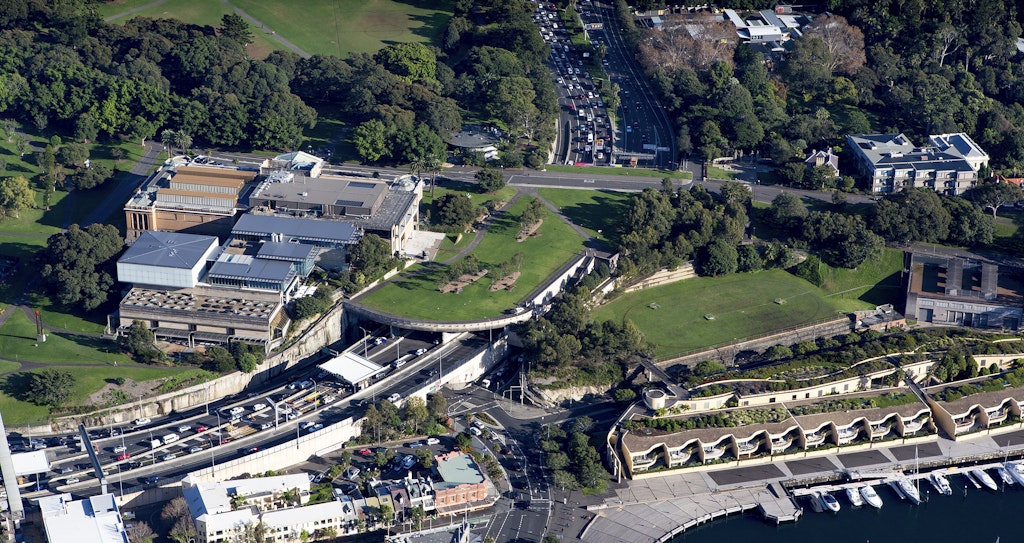
The land bridge over the Cahill expressway © Brett Boardman Photography, 2014
2003
A new Asian art gallery, designed by architect Richard Johnson is opened, evoking aspects of Asian culture with references to a lantern and a pavilion. The development is part of a wider building project that includes alterations to the original Asian art gallery, new exhibition space, conservation studios, a cafe, restaurant and function area with spectacular harbour views.
A translucent white glass lantern subtly reflecting the sky ... acts as a landmark for the gallery from the east of the city.
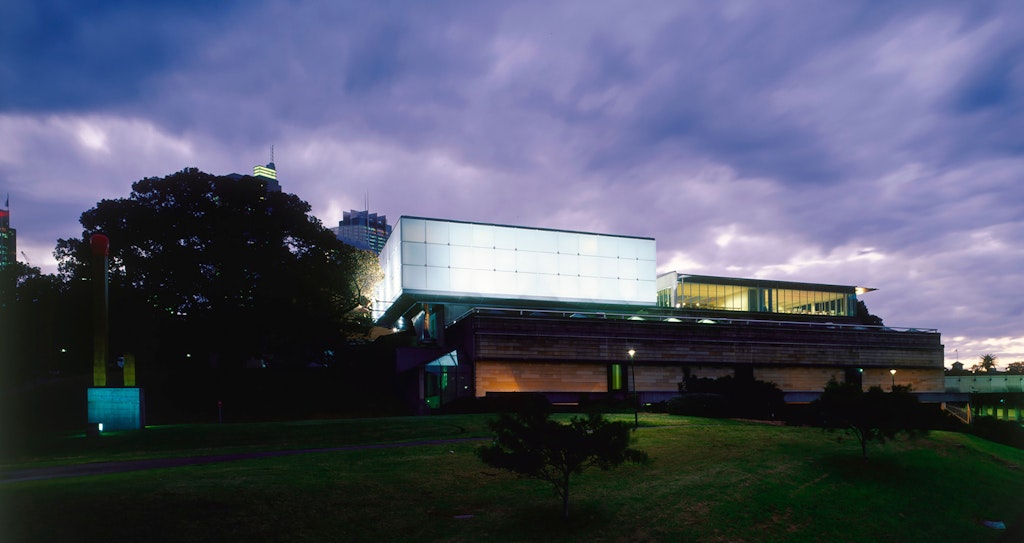
2011
In 2008 John Kaldor and his family make a gift of over 200 major international works of art. With the relocation of its storage facility off-site, the Art Gallery opens a new floor of contemporary galleries in 2011 featuring the John Kaldor Family Gallery and the Belgiorno-Nettis Family Galleries.
Donating my collection to the Art Gallery of New South Wales is a natural extension of my aim to share art with the public. It is also my largest-ever art project.
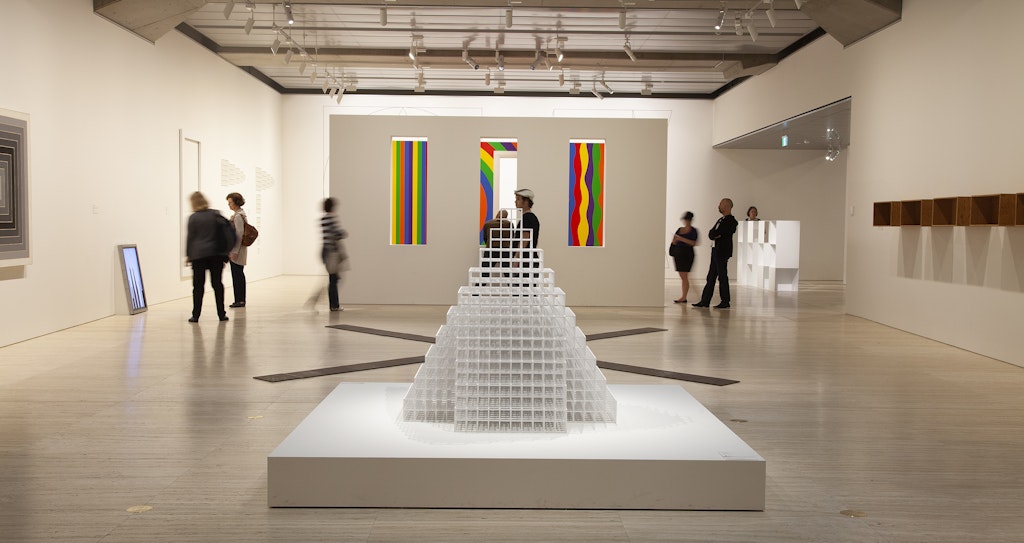
2019
Construction commences on a new standalone building by Japanese architects SANAA. Highlights include a prominent gallery for Aboriginal and Torres Strait Islander art, a large gallery for major exhibitions, dedicated studios for education and community programs, and a unique gallery space in a former WWII oil tank. A public art garden will link the new and existing buildings.
For a very long time we have wanted to create in Sydney an inspiring building dedicated to art that will give visitors a special sense of place.
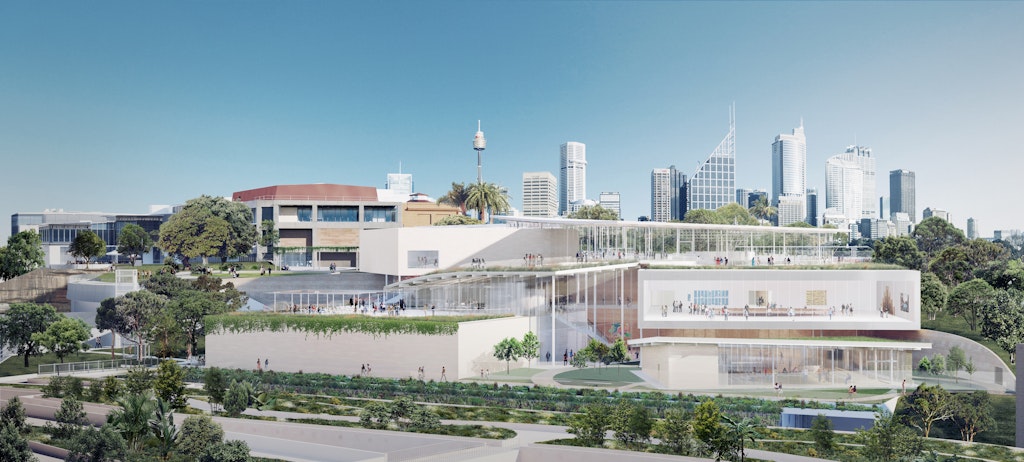
Image of the Sydney Modern Project as produced by Kazuyo Sejima + Ryue Nishizawa / SANAA © Art Gallery of New South Wales, 2018
2022
The Sydney Modern Project is completed, with the new building opening to the public on 3 December.
Our vision has been to transform the Art Gallery into an art museum campus with seamless connections between art, architecture and landscape.
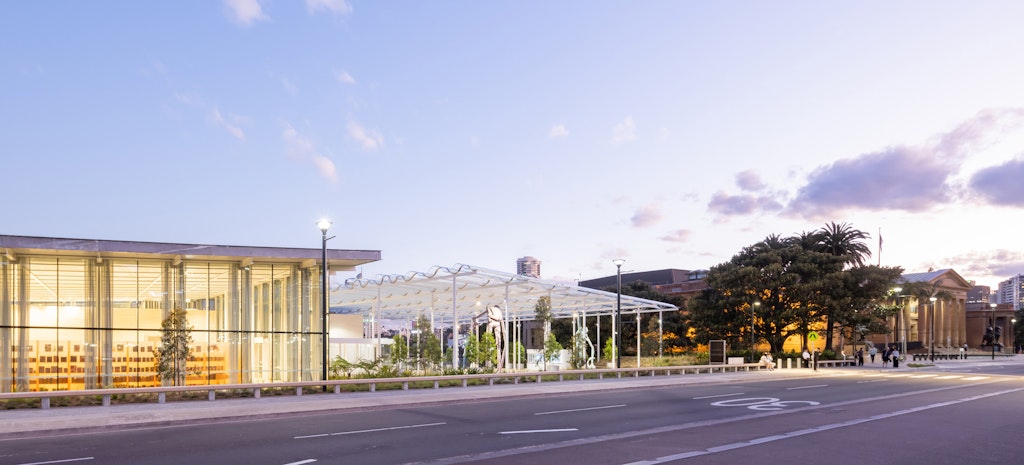
Exterior view of the Art Gallery of New South Wales, with the new SANAA-designed building (left), 2022, photo © Iwan Baan